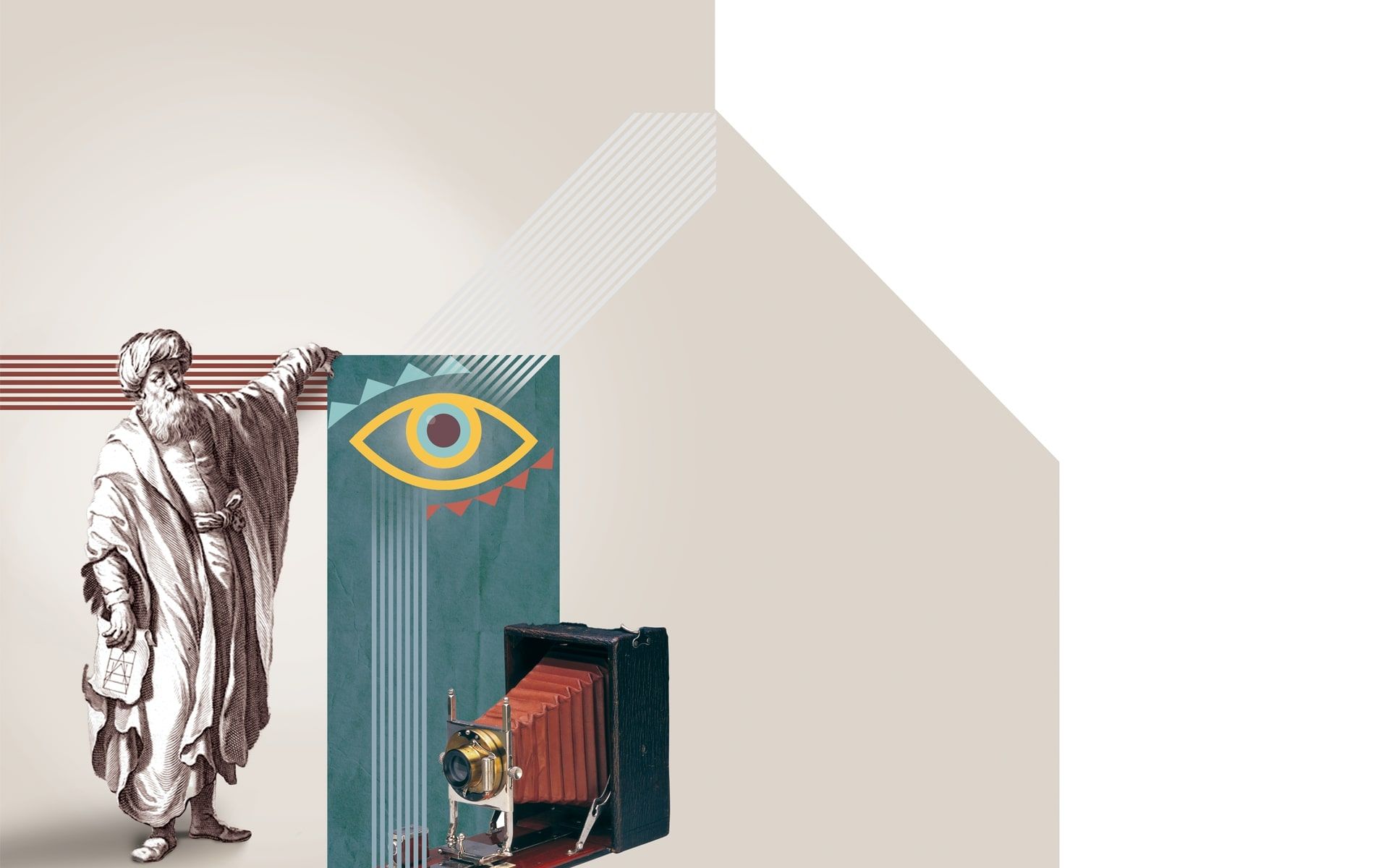Ibn al-Haytham’s Vision

In This Article
-
Ibn al-Haytham, the “Father of Modern Optics,” has influenced the likes of many scholars like him such as Isaac Newton and René Descartes.
-
Professor George Saliba of Columbia University has said that “Ibn al-Haytham is universally acknowledged to be one of, if not the most creative scientist Islamic civilization has ever known.”
-
One of the characteristics that make Ibn al-Haytham a modern scientist is that his scientific method was characterized by experimentation, i.e., he always tried to prove what he wanted to demonstrate.
He does not have a familiar name like Nicolaus Copernicus, Roger Bacon, or Galileo, but Ibn al-Haytham’s name is the reason that those aforementioned scientists carry the weight that they do today.
A product of the Islamic Golden Age, Ibn al-Haytham dedicated his entire life to making sense of the world and improving the scientific understanding of many disciplines that we take for granted. Also known as “Alhacen” or “Alhazen” and by too few, the “Father of Modern Optics,” (Tbhaki, Amr, ASM) his work influenced the likes of many scholars after him such as Isaac Newton and René Descartes. Although he is revered by some, al-Haytham has by no means received the attention in history that he deserves, as is the case of many ancient Muslim scientists who were overshadowed by the European Renaissance. “(The) likes of these great scientists, philosophers, and artists lived their worthy existence and influenced Europe in a variety of ways” (Ali, p. 162).
Professor George Saliba of Columbia University has said that “Ibn al-Haytham is universally acknowledged to be one of, if not the most creative scientist Islamic civilization has ever known” (www.light2015.org).
Al-Hassan Ibn al-Haytham (www.ibnalhaytham.com) was born in Basra, modern day Iraq in the year 965. When al-Haytham was born, it was the “golden age” of the Muslim world, a progressive Islamic period of innovation and communication that has been widely forgotten in history. It was a period which, though widely unbeknownst today, served as the seedbed of new ideas and scholarly endeavor that would be the starting points for many scientific research during the European Renaissance centuries later.
During this “Muslim zenith both in arts and sciences, in agriculture, geography, and warfare,” (Ali, p. 162) the Middle East was far more advanced than anywhere else in the world. Sparkling and populated cities such as Baghdad, Basra, and Cairo emerged as symbols of rapid progression and centers of learning. Scholars, scientists, philosophers, and mathematicians flocked from near and far to trade and study in the Middle East. “It should not be forgotten that Arab civilization played an essential role in the circulation and development of ideas and in the progress of knowledge” (Rius-Pinies, p. 97).Trade routes expanded and were crowded with people traveling to and from Middle Eastern territory. This helped spread the word of all these wonderful discoveries that were taking place in the prosperous hotspots of the Muslim world and attracted copious amounts of people to visit popular cities, meet intriguing figures, and to add their own contributions to what very well may have been one of the first historical melting pots on the planet.
There is a lot of speculation around the life of Ibn al-Haytham due to the lack of available evidence and written records regarding his life. To account for the seventy-five years he lived on Earth, there are very few stories that have been shared, even fewer with consistent details. One of these stories that has been mostly agreed upon by scholars is one that has had the largest implications on his life. Ibn al-Haytham had offered his services to Al-Hakim bi-Amr Allah, the Egyptian Caliph during this period. His mission was to devise a way in which he could control the flow of the Nile River, which had caused issues to surrounding areas of Egypt due to uncontrolled flooding. He realized later on that his strategy of a water dam would not be successfully actualized. The Egyptian Caliph was known for his unusually cruel and brutal treatment of his subjects (Tbakhi, Amr, ASM). So, true to his nature, when al-Haytham was unable to produce a solution to the problem he had set out to solve, the Caliph was filled with rage and aimed to bring consequence to al-Haytham. Accounts differ as to whether he was actually jailed or in hiding, but the consistency in this story is that al-Haytham outsmarted the Caliph by convincing him that he was mentally ill so that his life would be spared, a unique twist of fate that our modern world has greatly benefited from. Whether he was under house arrest or hiding away from the vengeful Caliph’s wrath, it was during this period of seclusion that al-Haytham wrote his most famous and influential work, the Book of Optics or “Kitab al-Manazir” as well as a multitude of additional works on various subjects (Tbakhi, Amr, ASM).
In one of the very few traceable direct quotes al-Haytham says, “If learning the truth is the scientist’s goal… then he must make himself the enemy of all that he reads” (www.ibnalhaytham.com). His opinions on experimentation, the need for scientific proof, and the importance in the experimental process have, over time, shaped the way that scientists operate and effectively prove their findings. “One of the characteristics that make Ibn al-Haytham a modern scientist is that his scientific method was characterized by experimentation, i.e., he always tried to prove what he wanted to demonstrate” (Rius-Pinies, p. 98). Not only did Ibn al-Haytham perfect his findings, but he constructed experiments that would demonstrate his discoveries to critics, leaving little room for debate and scrutiny that he had experienced in his past. One of these experiments was as simple as inviting his students to stare at the sun, showing them that the intense light that the sun emitted burned one’s eyes, proving Euclid’s and Ptolemy’s argument that the light originates from the eye was wrong; it starts outside the eye and reflects into it (Powers, NYT). Before al-Haytham’s findings, it was believed that vision was made possible through invisible rays that expelled light from the eyes. Al-Haytham turned this belief of the world of vision upside down, and because of his experiments, he was able to support his findings. “Thanks to his research based on a physical conception of sight, he could explain how the eye moves and how binocular vision functions” (Rius-Pinies, p. 100).
To be sure of his approach and fully understand his discoveries, he dissected the eye and studied its inner workings to attain a comprehensive knowledge, giving names to parts of the eye that we still use one thousand years later, terms such as; “crystalline,” “aqueous humor,” “vitreous humor,” and “retina” (Rius-Pinies, p. 100).
Ibn al-Haytham was known for his ground-breaking discoveries in the world of optics, but few know of the contributions he has made to other sciences as well. He is considered by many who have studied him to be one of the first polymaths, (Rashed, p. 773) meaning that he is strongly knowledgeable in a wide array of subjects. “In fact, as a medieval scholar, he had an education that included religion, literature, language, philosophy, mathematics, and astronomy, among other disciplines” (Rius-Pinies, p. 97). Only about fifty of his approximately one hundred professional works have been discovered up to this point.
Aside from his amazing advances in the world of optometry, Ibn al-Haytham is also responsible for contributing to other diverse areas of study, an attribute that not many scholars can boast. He was known to be a great philosopher and paved the way for the world of phenomenology, (Tbakhi, Amr, ASM) a complex discipline within the world of philosophy. Al-Haytham is also known to have been the first philosopher to draw a link between the worlds of religion and science, something that proved he was far ahead of his time (Tbakhi, Amr, ASM).
Within the field of astronomy, al-Haytham was one of the first scholars that seemingly began to doubt the geocentric model, the idea that the Earth was the center of the Universe. His studies and critiques on Ptolemaic astronomy were helpful to astronomers later on who were influenced by his writings (Tbakhi, Amr, ASM). In his later years he also wrote “The Model of the Motions of Each of the Seven Planets,” of which only one damaged copy, with much of the material missing, has been discovered. In mathematics, he made advances that included developing a link between two previously separate sciences; algebra and geometry (Tbakhi, Amr, ASM). Although al-Haytham is not known to have discovered any astronomy related breakthroughs, his works instilled enough doubt in later scholars on the correct form of the galaxy and nevertheless greatly influenced many Western scholars in their ventures.
It is confounding to think of how long ago al-Haytham’s works were formed given the knowledge that they have only recently been thoroughly studied and translated. “…it was not until the end of the 20th century when the seven volumes of the Arabic text were edited, translated, and studied properly by Prof. Abdelhamid I. Sabra…” (Rius-Pinies, p. 99). The fact that his work had waited so long to have been translated or brought to the public eye has made it easier for other scholars to be undetected as they used al-Haytham’s work and made it their own while reaping the benefits of his success. One example of this is Erazmus Witelo, a thirteenth century philosopher who wrote his own book on optics and was later discovered to have taken a significant amount of al-Haytham’s work and passed it as his own thus earning himself the eventual title of “Alhazen’s Ape” (www.light2015.org).
The knowledge of how the Muslim scientists of this period were underrepresented can be paralleled to a majority of Western culture views on the Middle East today (Hehmeyer, Khan, page 1467). Even during the European Renaissance, scientists and philosophers of that time failed to properly credit or realize the work of the Muslim scholars before disguising their works as their own, thus altering the perceptions and beliefs of later generations. I believe that in the United States there is a general consensus that there have not been significant contributions from the Middle East in the worlds of science, math, philosophy, and astronomy, because we have not been educated on such topics. It has become part of a baseless bias, one that for generations has coasted off a xenophobic attitude that has oppressed Muslims and discredited them for their achievements.
The Year of Light
An important step in recent years has been made by the United Nations as they officially declared 2015 the International Year of Light. One thousand years after the known completion of Ibn al-Haytham’s “Book of Optics,” this year was dedicated to celebrating important milestones in the history of light and science developments. This is incredibly important in restoring credit and honor to the man who devoted his entire life to changing not only the way in which we see the world, but the way in which we understand sight itself. It is a meaningful step in honoring not only Ibn al-Haytham, but the many Muslim scientists that existed before, during, and since his time and the great advances that they gifted to us. The goal of the International Year of Light was to create a campaign that raises awareness “of how optical technologies promote sustainable development and provide solutions to worldwide challenges in energy, education, agriculture, communications and health” (lightsources.org/about-2/).
Another powerful product of 2015, “1001 Inventions and the World of Ibn Al-Haytham” was a short film produced in honor of Ibn al-Haytham and his life’s accomplishments.
The amount of information and change that the world received from the few surviving works of al-Haytham is astonishing. From Ibn al-Haytham, we can attribute so much more knowledge to the science of the eye, how vision works, and its relationship with the brain. From his experiments we have learned about the scientific process and the importance of backing up ideas with solid evidence. From his studies of light, lenses, and refraction we have invented the telescope and microscope (Powers, NYT). One can only imagine what other knowledge he would have left us with had his remaining texts survived. With Ibn al-Haytham’s contributions, the world took a grand leap into a more progressive future.
“Arabic scientists, for instance, are a good example of incomprehensibly ignored figures, and for this reason, Ibn al-Haytham is still a complete stranger to most Western citizens” (Rius-Pinies, p. 96). Ibn al-Haytham dedicated his entire life to developing ideas and inventions that changed the world, made it more convenient for future generations, and paved a clear path for scholars of the Western civilization that ended up taking credit for his work. He lived just seventy-five years, but he accomplished enough for ten lifetimes.
SOURCES CITED
- Ali, Rabia Umar. "Medieval Europe: The Myth of Dark Ages and the Impact of Islam." Islamic Studies51, no. 2 (2012): 155-68. http://www.jstor.org/stable/23643958.
- “Discover the World of 11th Century Scientist Ibn Al-Haytham.” 1001 Inventions and the World of Ibn Al-Haytham, 1001 Inventions Limited, King Abdul Aziz Center, UNESCO, IYL 2015, 2015, www.ibnalhaytham.com/.
- Hehmeyer, Ingrid, and Aliya Khan. “Islam's Forgotten Contributions to Medical Science.” Canadian Medical Association Journal, vol. 176, no. 10, 8 May 2007, pp. 1467–1468., doi: 10.1503/cmaj.061464.
- “Ibn Al-Haytham and the Legacy of Arabic Optics.” International Year of Light - Ibn Al-Haytham and the Legacy of Arabic Optics, 2015, light2015.org/Home/ScienceStories/1000-Years-of-Arabic-Optics.html.
- “International Year of Light: United Nations Educational, Scientific and Cultural Organization.” International Year of Light | United Nations Educational, Scientific and Cultural Organization, 2017, www.unesco.org/new/en/unesco/events/prizes-and-celebrations/celebrations/international-years/international-year-of-light/.
- org. 15 May 2020, lightsources.org/about-2/.
- Powers, Richard. “Eyes Wide Open.” The New York Times, 18 Apr. 1999, archive.nytimes.com/www.nytimes.com/library/magazine/millennium/m1/powers.html.
- Rashed, Roshdi. "Portraits of Science: A Polymath in the 10th Century." Science297, no. 5582 (2002): 773. http://www.jstor.org/stable/3831971.
- Rius-Pinies, Monica. “On Science and the Construction of Identities: Remembering Ibn Al-Haytham (965–1039).” Contributions to Science: Open Access, 2015, doi:10.2436/20.7010.01.217.
- Smith, John D. "The Remarkable Ibn Al-Haytham." The Mathematical Gazette76, no. 475 (1992): 189-98. doi:10.2307/3620392.
- Tbakhi, Abdelghani, and Samir S. Amr. “Ibn Al-Haytham: Father of Modern Optics.” Annals of Saudi Medicine, vol. 27, no. 6, 2007, doi:https://doi.org/10.5144/0256-4947.2007.464.









